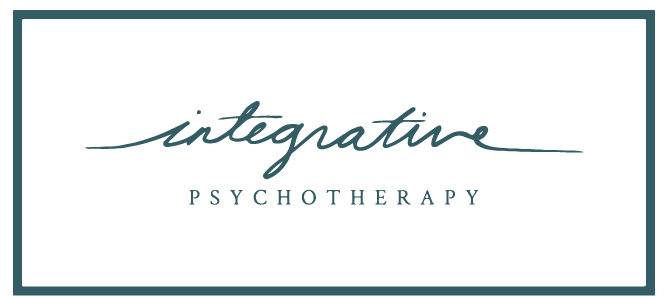Just Be Sad With Me: A Story About Love & the Courage to Let Go
She looked up at me for the first time since she had come in that day.
It was twelve minutes to be exact. Carmen’s eyes hadn’t moved much beyond her gaze downward to the quilted carpet, to the face of her fiancé, Matt.
But in this moment, she looked up at me.
She wasn’t just looking—she was actually connecting.
I stayed in the silence for a few moments. Something must have resonated with Carmen, allowing her to look up.
“Do you really believe that?” she asked, looking at me with a perplexed tone.
“That there’s nothing as whole as a hurting heart?”
“Yes, you just said that. Do you really believe it?” she asked again, holding her gaze stronger this time.
As I repeated those words, I could see her eyes stinging with tears.
“Yes,” she said sheepishly.
“Yes,” I reiterated. “Hurting is a sign of feeling—and being able to feel, care, and love means you care with your whole heart.
It’s beautiful to hurt.
And it also hurts to hurt.”
I looked at her. The tears began to flow down her cheeks.
I put my hand on my heart. The pain in the room was tangible.
Matt reached for Carmen’s hand and squeezed it tight. She gave him a bittersweet glance and then kept sobbing.
She looked up at me, waiting for the second half of my sentence.
I took a deep breath.
“And when we ache, for a long while, it’s wise to stop and pause—to see if there’s a way that’ll help the hurt soften. Because we aren’t meant to ache forever.”
Carmen was sitting across from me with her soon-to-be ex-fiancé, Matt.
They came in because, though they had a deeply sweet relationship, they had both recently realized they did not want the same things in life.
Carmen was wanting to pursue her career in law. And not just law, but big law—with long hours and limited personal time.
Matt, a family man, was looking to start a family within the next two years.
Sitting in the room with the two of them was painful. There are different kinds of pain a therapist can feel and see.
This kind of pain—though sad to witness—was not entirely sad.
Both Matt and Carmen were wonderful people. I had faith, from what little I knew, that they could go on and build beautiful lives—just not together.
But the tricky part was that they were struggling with letting go.
I was hoping to help them process what was going on so they could have some relief from the emotional distress they were feeling. I had a feeling that some of the distress wasn’t in the decision—but in the interactions that preluded it.
Couples don’t end because of one disagreement.
They end when what they each need isn’t compatible anymore.
And while endings are painful, sometimes continuing is even harder—and less healthy.
Carmen was engaged for the rest of the session. She chimed in at first with stories of their relationship—how sweet the energy was between them—but at the end of each sentence, her voice would drop.
It almost seemed like there was an edge of exhaustion.
Relationships aren’t meant to be exhausting.
Yes, they take work—but not depletion.
And from the intake call, when Matt first reached out, I could already hear that exhaustion.
“I know I’m calling for both me and my fiancée,” he said, “but honestly, I need my own help too. I’d like to start with this for the two of us.”
He had called me on a bright Thursday morning. Though he was articulate and kind, there was a heaviness in his voice.
“I need to be able to move past this. I hope you can help both of us—but more than us, me.”
I noted his urgency. His longing to understand what wasn’t working.
Sitting with them now, I was getting a clearer picture: Matt was worried that he would get stuck in this grief—trapped in the space between loving her and needing to let her go.
There are heartbreaks that come with betrayal, and others that come with deep respect.
This was the latter.
They weren’t fighting, blaming, or shaming.
They were both just heart broken—trying to learn how to say goodbye while still loving each other.
That’s what people often don’t realize: heartbreak is not always a failure. Sometimes it’s an act of honesty.
And in the room that day, all three of us were sitting in it—the ache, the love, and the quiet bravery it takes to let go.
I trusted they would find their way, as they were taking the steps to holding their hearts as they moved ahead.
Now turning to you dear reader,
If you’ve ever navigated loss or sadness, this may land in your heart in some way. Let’s talk about how sadness and loss expresses itself.
The Somatic Side of Sadness
Heart break lives in the body.
In somatic therapy, we see that loss registers not just as emotion, but as sensation: the lump in your throat, the tightness in your chest, the shallow breath.
When we allow sadness to move through us—instead of rushing it away—we create space for healing.
We teach the body that grief doesn’t have to mean danger.
That connection can change form without disappearing entirely.
As Dr. Peter Levine says,
“Trauma is what happens when we cannot complete what the body needs to do to feel safe again.”
So in heartbreak, the work isn’t to “get over” someone—it’s to let the body finish what love began: feeling, expressing, and releasing.
In my somatic therapy NYC sessions, we often begin not with words, but with breath.
The body tells the truth long before the mind catches up.
The Quiet Work of Healing
As a therapist, I’ve learned that pain doesn’t need to be hurried.
It needs presence.
When I told Carmen, “There’s nothing as whole as a hurting heart,” I meant it.
A hurting heart means you were open enough to love.
And that openness—when tended to gently—becomes the soil of healing.
When we’re allowed to be sad, something begins to shift.
We don’t stay stuck in sadness forever.
We metabolize it.
Sadness becomes a bridge back to self, back to aliveness.
That’s attachment healing—not just fixing relationships, but re-learning that we can stay connected to ourselves, even when love changes form.
What Love Teaches Us About Living
Love is not a single lifetime event—it’s a continuous practice.
We fall in love, we grow, we change, we sometimes fall out, and—if we’re brave—we learn to open again.
As Esther Perel writes,
“We fall in love many times in our lives, sometimes with the same person, sometimes with different ones.”
And as Bell Hooks reminds us,
“To love well is the task in all meaningful relationships, not just romantic ones.”
Each person we love shapes our nervous system’s story of connection—expanding our range, deepening our empathy, teaching us that vulnerability is not weakness but aliveness.
Loving, losing, and loving again are not contradictions—they are the heartbeat of a life well-lived.
So if you’re heart broken, remember: you are in the middle of a sacred process.
Love is not leaving you. It’s changing shape inside you.
If you’re in a season of loss, please know this: you’re not meant to be okay right away.
But you are meant to heal.
Your sadness is not weakness—it’s a sign that you loved deeply. And with care, presence, and the right support, you can heal your heart without closing it.
If you’re seeking attachment therapy or somatic therapy in Long Island or NYC, I offer evidence-based therapy to help you process grief, regulate your nervous system, and reconnect to hope.
👉 Click here to book a free 15-minute consultation or call 347-903-7835.
We are here to support you!
Warmly,
Esther and Team
For Therapists and Psychologists
If you’re a therapist or trauma-informed clinician who holds stories like this—sitting in rooms where love and pain co-exist—and you want to deepen your capacity for presence and regulation,
I invite you to apply for the Trauma Mastery & Consultation Program.
It’s a six-month high-touch mentorship for advanced clinicians who want to refine their somatic, EMDR, and attachment integration work.
Applications are by invite only. Click here to learn more or apply
.
.
P.S. Before you go—grab your free download: “Somatic Skills to Regulate Your Nervous System.”
It’s a simple, embodied guide to help you ground and stay steady—whether you’re supporting clients through heart break or walking through it yourself.






